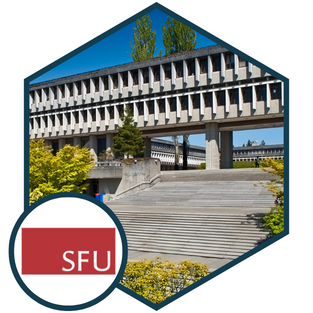When Simon Fraser University (SFU) determined it needed a platform to facilitate its ambitious goals, Canvas was chosen for its ability to take them into the future of higher education. A smooth integration meant Canvas was up and running within a year and quickly popular. The LMS supports student engagement and freedom in a palpable way at the university and students are eager to co-create content, deeply and actively engage with course material, and help drive course content and direction.
The Challenge
In 2012, the renowned Simon Fraser University, located in British Columbia, Canada, began a major project to replace its aging LMS. With almost 27,000 students, Simon Fraser was one of the most innovative and diversely programmed institutions in Canada, and the LMS the university had been using for years was no longer su ciently serving the students. SFU needed an educational technology platform that would facilitate its ambitious goals and outfit the university for the future of higher education.
“Open source is the answer. Why would we solve yesterday’s problems as we proceed into the future? We need to do more than respond; we need to anticipate change.”
-Dr. Martin Laba, Associate Professor, School of Communication, SFU
Simon Fraser University assembled a comprehensive committee that included representatives from a wide range of constituencies and communities throughout the university. Together, the team agreed on a process that would treat the enterprise as a “teaching and learning” initiative rather than a “technology” initiative and advance the university's commitment to achieving a future-facing learning environment.
As Dr. Martin Laba of SFU’s School of Communication and Director of Academic Community Engagement for the project described it: “Simply stated, the approach taken here was teaching- and learning-driven, and was a search for a system that would be nimble, versatile, adaptable, customizable, and especially open. ‘Future-facing’ meant a system that could smartly adapt to new technologies (and the social and cultural currents of those technologies) and the dynamism of emerging teaching and learning approaches, digital and face-to-face contexts alike.”
Key Insights
Ease of use and seamless integration enabled an accelerated implementation process
Students and faculty became more active and engaged upon Canvas adoption.
As an open-source LMS, Canvas provided the opportunities for innovation and customization SFU urgently needed.
Simply stated, the approach taken here was teaching- and learning-driven, and was a search for a system that would be nimble, versatile, adaptable, customizable, and especially open. ‘Future-facing’ meant a system that could smartly adapt to new technologies (and the social and cultural currents of those technologies) and the dynamism of emerging teaching and learning approaches, digital and face-to-face contexts alike.
Dr. Martin Laba,
Associate Professor, School of Communication, SFU
The Solution
Initially, the committee was leaning toward a proprietary LMS. Some felt that proprietary software would lessen the risk, allowing sta to rely on 24-7 hotlines and developer support should anything go wrong. But as they researched LMS after LMS and conducted thorough interviews with staff and students, they discovered that the proprietary o erings were rather rigid and not entirely consistent with the bold and dynamic approaches typical of an institution as forward-thinking as Simon Fraser University.
“New and emerging educational approaches today are about experiential learning, boundless classrooms, community-based engagement, and social change—all these things depend on openness and accessibility,” said Dr. Laba.
An open-source LMS would provide the opportunities for innovation and customization that SFU needed. Given its open API and like-minded mission, Canvas was a clear choice.
“It truly feels like Canvas was made at SFU in partnership with Instructure.”
-Dr. Martin Laba, Associate Professor, School of Communication, SFU
The Result
Simon Fraser University was up and running on Canvas within a year. “It was quickly popular,” said Laba. “Integration was very smooth. And the malleability, openness, and capacities of Canvas were brilliant to work with and enabled this accelerated adoption.”
There’s a collective cheer from the student body, as well. “The engagement and freedom students feel is palpable,” said Laba. “Students are no longer passive recipients of knowledge. They want to co-create content, deeply and actively engage with course material, and even at times revise course content and direction.”
“Canvas substantially supports and facilitates student aspirations. It’s been hugely successful for us.”
-Dr. Martin Laba, Associate Professor, School of Communication, SFU
Laba’s own fourth-year course, Applied Communication for Social Issues, demonstrates how Canvas has enhanced and elaborated SFU’s mission of engagement. Students choose their issues and dedicate the entire semester to addressing each issue through the design and development of communication.
“We’ve opened up a lively public sphere in Canvas, a space of discussion and debate for students. It’s a space that gives depth and substance not only to the content but to the quality of the student experience in the course. So it’s more than a discussion forum. Students guide the course by bringing in new material they find.”
“They can send the course in new directions each week. They can urge classmates and colleagues to not just analyze but engage through real-world actions of consequence. They can critique anything I’ve said, or offer up new resources that should be on the syllabus. They can also put up work in progress and get feedback as they move forward,” said Laba.
Download Case Study
